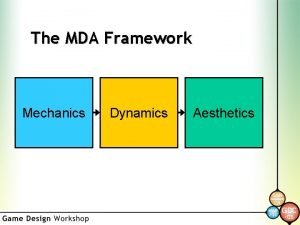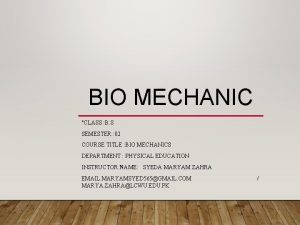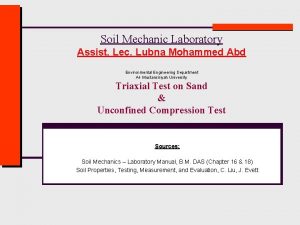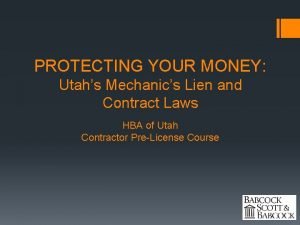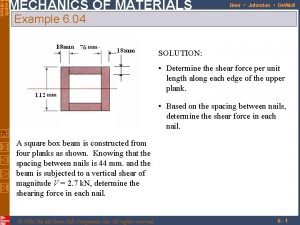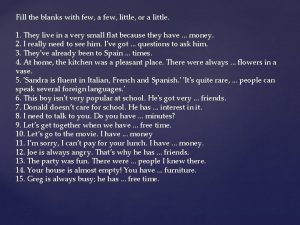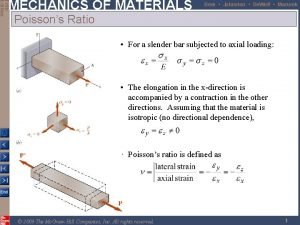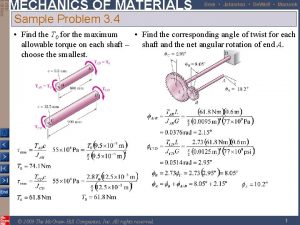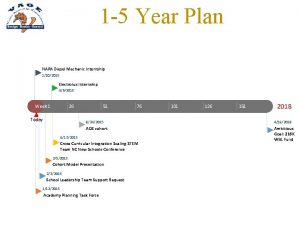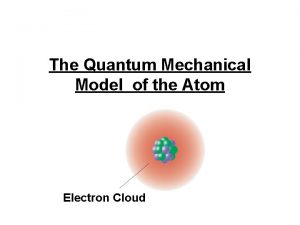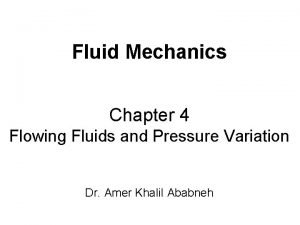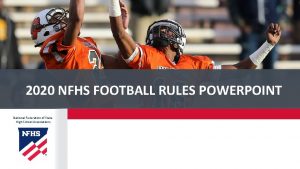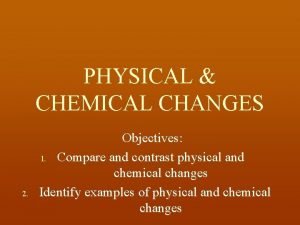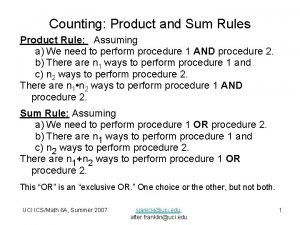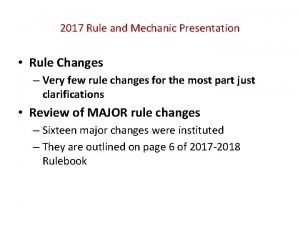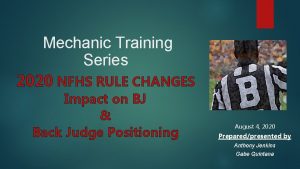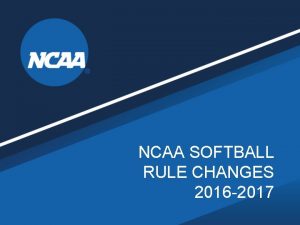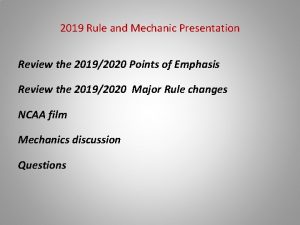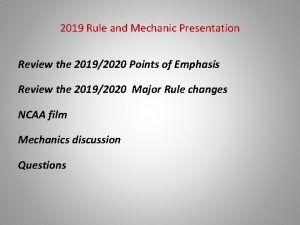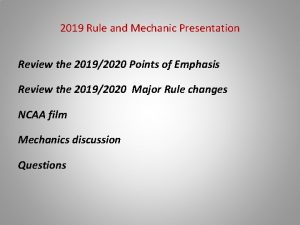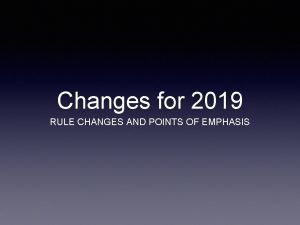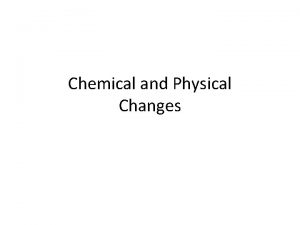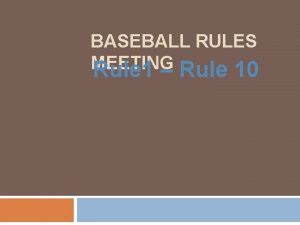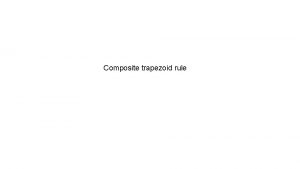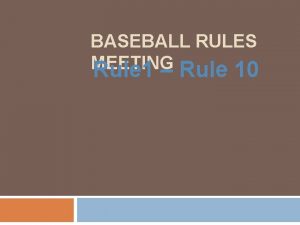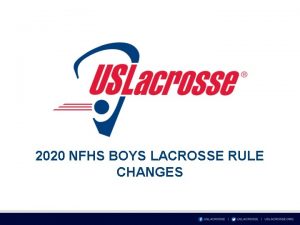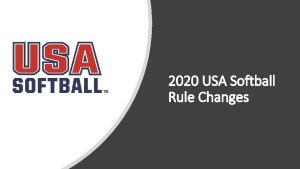2016 Rule and Mechanic Presentation Rule Changes This




































- Slides: 36

2016 Rule and Mechanic Presentation • Rule Changes – This is a non- rule change year • Review of 2015 -2016 MAJOR rule changes – Six major changes were instituted – They are outlined on page 5 of 2015 -2016 Rulebook – Do you remember what they were? – How do you think we did with them?

2016 Rule and Mechanic Presentation • So how did we adapt to the 2015 major rule changes? – For the most part well – Faceoff procedure • This change received a great deal of positive feedback – Still some minor issues – Over and Back • Good feedback easier to officiate – Still some issues with blowing dead and restarting – Shot clock situations • Some good some bad feedback – Subjective but is there an answer? – Continuation of play after time expires at end of quarters • Good job really no issues – Clarification of the “Dive” • Work to be done – Dead ball timeouts • Minor rule interpretation here.

2016 Rule and Mechanic Presentation • Faceoff • • Better for the game Easier if we do it right Clear violations Adjusting – Our issues • “swisshistle” – Not to be used – Not our fault if players move • Not varying whistle • Helper not prepared or willing to call violations • Lack of signal after violation 3

2016 Rule and Mechanic Presentation • Faceoff – items from early season memo 3/20/15 • Two officials conduct face off in the following manner. Single side official instructs players to go down and will make all physical adjustments to the faceoff men and their sticks. The lead left official checks neutral zone, player and stick position and verbally communicates this to the single side official and players. Both officials are responsible for calling violations. • Once the players are in the proper position, the single side official shall place the ball on the ground, in between the head of each Crosse, paying close attention to placing the ball IN THE MIDDLE of the head of each Crosse. 4

2016 Rule and Mechanic Presentation • Faceoff – items from early season memo 3/20/15 • Once the official is satisfied with the placement of the ball & of the positioning of the players crosses, he shall instruct the players to remain motionless by saying “Set. ” MECHANICS NOTE: Officials will still have their hand on the crosses when the command of “Set” is given. • After the “Set” command, the official shall back out and blow the whistle when he is clear of the scrimmage area. The official does not have to be stationary, and in all likelihood will still be moving backwards, when he blows the whistle to start play. The whistle cadence will vary with every faceoff. • Note: Players will be in the face-off position longer than in previous years and they MUST wait for the sounding of the whistle. 5

2016 Rule and Mechanic Presentation • Faceoff – items from early season memo 3/20/15 • From rule book – it is illegal to kick, step on, or place any other body part to his Crosse or the Crosse of the opponent. It is illegal for a faceoff player to use his Crosse to hold or pin down either player’s cross. • EXAMPLE: If the elbow goes to the ground and then comes into contact with the cross of either player, a violation has occurred. This counts as one of the three violations per half. This new rule was added to decrease the length of time the faceoff players will be down “scrumming” for the ball. The Committee’s intent is to get the ball out quickly to create a ground ball. 6

2016 Rule and Mechanic Presentation • Faceoff – items from early season memo 3/20/15 • Further clarification – even though the example mentions the elbow it relates to any body part that is used to gain an advantage on the faceoff. What is typically happening when this is at issue is the faceoff player is grounding himself in the neutral zone area to prevent movement and in particular forward movement of the opponents stick. • If a player’s first move is into the opponent’s body with the intention of not playing the ball this would be a violation and possibly more. If it is deemed that contact was severe enough for a personal foul then the correct ruling would be the following. A faceoff violation has occurred plus a personal foul. If it was the third faceoff violation then you would have two penalties one the in home would serve (technical) and one the player committing the personal foul would serve 7

2016 Rule and Mechanic Presentation • Faceoff • When a violation occurs it is important for the teams to know the number of violations they have accumulated. The official that has blown the whistle for an infraction first must decide whether it is a faceoff violation or not. After the signal for the offense and it was determined to be a faceoff violation, the official after sounding the whistle to resume play the official will indicate to benches the total number of violation for the half on the team that just violated. • This will be done by a simple raising of the hand with the appropriate number of fingers per violation and stating as an example that is “two on blue”. 8

2016 Rule and Mechanic Presentation • Faceoff – Single official: (SS) • Will be in charge of conducting all face-offs. • Will do all speaking & will blow the whistle to start play. • Hold the ball in his hand as he says “down”. • Adjust players after they initially go “down” into their position. • Be sure to place the ball EXACTLY in the middle of the sticks. (Never in the throat) • Be sure to say “set” with your hand still on the sticks of both players crosse (don’t allow the ball to move). • Delay & vary your whistle on every face-off. 9

2016 Rule and Mechanic Presentation • Faceoff – Lead Left (L) • Will assist on all face-offs • Initially be close enough to adjust players when they are given the command “down”. • Remain close enough hear the “set” call, but far enough away to get out quickly. • Is responsible for the goal at his end of the field. • Be aware of where the wing players are located (especially on the bench side) • Visually watch for movement prior to the whistle & if observed, to make violation calls. (These calls must be made) • Observe neutral zone

2016 Rule and Mechanic Presentation • Faceoff – Lead Right: (R) • Will be in a position to watch both wing areas (prior to & after the whistle to start play) • Be in a position to get to the goal at his end of the field • In charge of all 20 second beepers – after a goal is scored – ROTATION: • After a goal is scored: • The lead official will retrieve the ball out of the goal & conduct the next face-off from the single side of the field. • Depending upon which end the goal is scored the Single side official will rotate to bench side of the field & will either be the lead left & assist with the next face-off OR be the lead right & start the 20 second “delay of game” beeper as well as watch the wing area players on the next face-off.

HOME VISITOR XXXXX R Responsibilities - wing line violations - goal line coverage - move on whistle - some possession calls - beeper to start play - time outs - line violations OOOOO L Responsibilities - assist in adjusting players - F/O player movement after “SET” - post-whistle violations - goal line coverage - some possession calls - observe neutral zone R L SS SS Responsibilities - face-off commands/ communication - pre-whistle violations w/bench-side help - Back toward far sideline - 30 -second counts Updated 1/14/15 F/O Mechanics 12

HOME VISITOR XXXXX OOOOO R TL L SS SS Updated 1/14/15 Rotation after goals 13

HOME VISITOR XXXXX OOOOO R T L L SS SS Updated 1/14/15 14 Rotation after goals

2016 Rule and Mechanic Presentation • Faceoff – Rule 4 -3 • - Rotation reminders: – Lead official will get the ball after a goal & carry it to midline. – Face-off officials should be (roughly) diagonally across from each other. – Can we change what we do based on time or situation? Yes. – Can you move your position to get the best view. Yes. – Try not to be predictable on every face-off. – Locate yourself to a different spot, based upon what has occurred on previous face-offs. (Which way has the ball gone before? Adjust to it)

2015 Rule Changes and Mechanic Presentation • Faceoff - Rule 4 -3 • What does “Move, rake, or direct the ball within 1 step” mean? – Intent get the ball moving • Can a player jamb the ball in the back of the stick and stand up without taking 1 step? – Yes, The Rule change was designed to allow face-off players to make the same initial moves as in previous years. – However the player gaining possession must move the ball as described in Rule 4 -3.

2015 Rules Changes & Mechanics Presentation • Possible Questions: – Can face-off players move prior to the set call? • Yes – Can face-off players delay the process every time? • No. If they do, call a violation. – How quickly do we blow the whistle? • Delay and vary your cadence every time. • You should be moving backwards when the whistle is blown to start play. Do NOT stop to blow the whistle. • Who restarts the play after a violation? • Single Side official.

2016 Rule and Mechanic Presentation • The “Dive” Rule 4 -2 Two Types of players: 1. ) Player in possession 2. ) Player not in possession Two Types of goals scored: 1. ) A player leaves his feet of his own volition 2. ) A player stays grounded throughout the play

2016 Rule and Mechanic Presentation • The “DIVE” Rule 4 -2 • Player in Possession – Simply put • If an attacking player, in possession of the ball and outside the crease area, dives or jumps (becomes airborne of his own volition) prior to, during, or after the release of the shot and lands in the crease (For any reason) the goal shall be disallowed. • If he decides to leave his feet, he must land outside of the crease for the goal to count. – If he stays grounded (does NOT launch himself) – the can goal count. • An attacking player may legally score a goal (provided the ball enters the goal before the contact with the crease area), and his feet are grounded prior to, during, and after a shot. • Running through the crease (after a goal) is different than launching.

2016 Rule and Mechanic Presentation • The “DIVE” -Rule 4 -21 – The difference is the deliberate launching of ones self, compared to merely stepping, striding, falling etc. . after a shot when feet were grounded outside of crease. – The 1 st decision for officials is whether a player deliberately launched himself or not. • If he deliberately launched himself & ends up in the crease for any reason. No Goal. – The 2 nd Decision: Foul or No Foul/Good goal-No goal • Don’t use a foul as a crutch

2016 Rule and Mechanic Presentation • The “DIVE” -Rule 4 -21 – The 2 nd Decision – Foul or No Foul/Good goal-no goal (continued) Player launching ones self • No goal - however would may have a time serving foul. • This will most likely occur more often than in previous years. Player remaining grounded and contact put him into the crease • Was contact legal or illegal? • The result is a good goal (providing no part of the attacking player touched the crease area prior to the ball entering the goal) • If a foul: Technical foul – it is wiped out • If a foul: Personal foul – the defensive player serves penalty, next face-off will be conducted man-down.

2016 Rule and Mechanic Presentation – The “DIVE” - Rule 4 -21 • Situations a goal shall count is when – A player outside of crease in contact with the ground (grounded) shoots and falls, steps, rolls or runs in the crease after the ball enters the goal. • Situations a goal shall not count when – A player is illegally pushed in the crease and prior to the ball entering the goal touches crease, goal, or goalie. – A player outside of crease in contact with the ground (grounded) shoots and falls, steps or runs in the crease prior to the ball entering the goal.

2016 Rule and Mechanic Presentation • The “DIVE” - Rule 4 -21 • Player not in possession • A player could be receiving a pass (not in possession) & end up in the crease due to legal or illegal contact • If a player leaves his feet (straight up) to catch a high pass & contact causes him to land in the crease, the goal will count (provided the ball entered the goal prior to any contact with the crease area. ) • The decision on legal or illegal contact will determine whether or not the defensive player will serve time.

2015 Rule Changes and Mechanic Presentation Stall Warning (Shot Clock) Rule 6 -11 • Until 2017 it can be a visible shot clock or game clock will be used • Two methods 1. ) Visible shot clock 2. ) Game clock • Visible shot clock • Operated by person outside of officiating crew – Crucial to have a pregame conversation with clock operator. – Duties - Refer shot clock operator to Rule 2 -12, Page 22. – Start/reset clock on game official’s verbal and visual signal. – Stop, start and restart shot clock in sync with game clock. – Blow horn if shot clock expires without a reset.

2015 Rule Changes and Mechanic Presentation • Stall Warning (Shot Clock) Rule 6 -11 – Using the Game Clock for the “shot clock” call. • Officials are totally in charge of the call • Initiate the clock on any of the zero increments on clock – Example 1: 00, 1: 10, 1: 20, 1: 30 etc… – Most of the time the shot clock will end on a -0 -. • Exception: • On any reset situation (defensive play-on or flag down) the reset of the shot clock and end of the shot clock may NOT end in -0 -. • Officials must verbalize expiration time, Trail official must relay the # to the bench. Note: The horn or buzzer, at the end of Quarters or Shot Clocks does not stop play. Only the sounding of the officials whistle stops the play.

2015 Rule Changes and Mechanic Presentation • Stall Warning (Shot Clock) Rule 6 -11 – Administration and mechanics • Most of the rules from the old timer on are used except the following – Starts/stops in sync with game clock. (20 second timers are no longer used) – The official will verbalize using “Shot Clock” when initiated and “Shot Clock off” with hand wipe signal. – Offensive timeout during shot clock will continue from point of stoppage. – Inadvertent whistles will continue from point of stoppage. – Injury timeouts will be same as a normal timeout. – Offensive equipment problems will continue from point of stoppage. – Defensive Timeouts reset the 30 second shot clock. (Rule 6 -11 -d)

2015 Rule Changes and Mechanic Presentation • Stall Warning (Shot Clock) Rule 6 -11 – Administration and mechanics • What ends a shot clock once it has been put on – A shot that hits goalie that is initiated above the goal line extended (does not matter in the crease or out of crease) – A shot that hits the goal post that is initiated above the goal line extended – A stoppage to administer a time serving foul – Possession change • What resets a shot clock once it has been put on? – Any flag down or loose ball play-on by the defense – A defensive timeout

2015 Rule Changes and Mechanic Presentation • Stall Warning (Shot Clock) Rule 6 -11 – Administration and mechanics – Excellent job improving consistency over the last 3 seasons • Strive to be consistent (for that game) – Same in 1 st quarter as in the 4 th quarter – Prepare (pregame) & understand team tactics throughout the contest • Timeout just prior to stalling call – Need to factor in what they were doing before timeout and after play resumes. – Did they call timeout to buy additional time prior to stall warning? – Are they attacking the goal in the same manner as earlier?

2015 Rule Changes and Mechanic Presentation • Stall Warning (Shot Clock) Rule 6 -11 – Triggers – not all inclusive just some tips • Items to consider that may trigger a shot clock situation – Change in offense that no longer attacks the goal – Offensive player standing in the attack area with the defense playing the ball – Offense not setting picks to create a scoring opportunity – Offense not trying break down their man 1 on 1 – Offensive player beating his man and turns back instead of going to goal – Offensive player in an obvious shooting position that chooses not to shoot or continually shoots high or wide

2015 Rule Changes and Mechanic Presentation • Stall Warning (Shot Clock) Rule 6 -11 – Triggers – tips (continued) • Items to consider that would not trigger a shot clock situation. – Defense is better than the offense – Defense in a packed in zone – Defense switches from man to zone or zone to man – Offense feeds the crease (attempt to create offense) – Defense hung up on crease (however they don’t get forever here) – Deliberate offense that is run in a reasonable amount of time.

2015 Rule Changes and Mechanic Presentation • Over and Back – Rule 4 -16 (new portion) – Once the team in possession has satisfied the 30 second clearing count, the over & back rule applies to that team. If that team causes the ball to touch or cross the midline a turnover will result. (Last to touch & last to possess). • What to be aware of as the ball nears the midfield line. • Who last touched? Who last possessed? • Offensive Player possession & then stepping on the midline? • Defensive ground ball & quick stick check causing loss of ball over the line. • Was the original 30 second clearing count satisfied? – Signals are VERY IMPORTANT.

2015 Rule Changes and Mechanic Presentation • Over and Back – Rule 4 -16 (new portion) – Result will be an immediate whistle or a play-on. • When should a play-on be used? – Limited – it will need to be a quick and distinct advantage situation. – Do not extend it – See rule 7 -10 page 80 – Mechanic • Trail official (who is now going to be the lead official at the other end of the field), MUST be on the midline to observe this play. • This official MUST also be aware that if a violation is whistled, he has the goal line at the other end of the field. • The restart on this play will be blown in by the single side official (coming up towards the play).

2015 Rule Changes and Mechanic Presentation • Over and Back – Rule 4 -16 (new portion) – Signal for violation – We will use the “Universal” over & back signal (same as the out & back into the crease signal). Everyone will know what the call is. – NOTE – A shot that hits the pipe & returns to the defensive end of the field will be treated the same as a defensive deflection. • NO VIOLATION has occurred. • A new 30 second clearing count will be started for the team that gains possession of the ball

2016 Rule and Mechanic Presentation • Scoring rules 4 -10, 4 -11, and 4 -28 • It is now possible for play to continue after the horn sounds signifying the end of a quarter • How – If a player released the ball from his stick, on a shot, prior to the end of the quarter. – Consider this as it is “good if it goes” in basketball. – Deflections: Defensive deflection = good goal Offensive deflection = No goal if deflection is after the end of the quarter or sounding of the horn. • Does this pertain to the shot clock also? – Yes the same rules pertain to shot clock expiring

2016 Rule and Mechanic Presentation • Scoring rules 4 -10, 4 -11, and 4 -28 – Mechanics • Withhold your whistle in shooting situations at the end of shot clocks & quarters. • Communicate with partners (verbalize “short time”) • A game or quarter can end with goal that would result in not having a faceoff • If a team shoots and scores a goal as the clock expires at the end of regulation and this score ties the game a stick check may be requested. • If it is the winning goal no stick check.

2016 Rule and Mechanic Presentation • Team timeouts - Rule 4 -27 (new portion) – Intent - To eliminate a timeout for a team that has committed a turnover (non-time serving technical foul) when not entitled to the ball. • A team not entitled to possession may not take a timeout in the following: Offsides, Warding off, Over & Back, Crease violation, Faceoff violation, Illegal Pick, etc. • No stick check requests will be granted during non-time serving technical foul committed in field of play. Examples as listed above • A defensive request for a timeout (if heard by the official) will result in a time-served technical foul. • Either team may call timeouts in all other dead ball situations. Examples of these are: After a time served foul, injuries, equipment problems, any time the ball goes out of bounds (endline or sideline), etc.
 Changes in latitudes, changes in attitudes meaning
Changes in latitudes, changes in attitudes meaning Example of a chemical change
Example of a chemical change Mechanic as metaphor
Mechanic as metaphor Mda model game design
Mda model game design Bio mechanic
Bio mechanic Mobile mechanic
Mobile mechanic Soil mechanic
Soil mechanic How to file a mechanics lien in utah
How to file a mechanics lien in utah Vertical beer
Vertical beer Danny is my best friend. i know _____ so well.
Danny is my best friend. i know _____ so well. Mechanics of materials chapter 6 solutions
Mechanics of materials chapter 6 solutions Beer mechanics of materials 6th edition chapter 4 solutions
Beer mechanics of materials 6th edition chapter 4 solutions Mechanic of materials
Mechanic of materials Mechanics of materials
Mechanics of materials Mechanics of materials
Mechanics of materials Mechanics of materials 6th edition solutions chapter 10
Mechanics of materials 6th edition solutions chapter 10 Beer johnston
Beer johnston Beer
Beer Beer and johnston
Beer and johnston Mechanics of materials 6th edition beer solution chapter 3
Mechanics of materials 6th edition beer solution chapter 3 Edward suchman stages of illness
Edward suchman stages of illness Difference of tone and mood
Difference of tone and mood Powerhouse mechanic
Powerhouse mechanic Goal216
Goal216 Quantum mechanical model of the atom
Quantum mechanical model of the atom Euler's equation of motion derivation
Euler's equation of motion derivation Nfhs football rule changes 2020
Nfhs football rule changes 2020 National federation wrestling rules
National federation wrestling rules Sinciput presentation
Sinciput presentation Vertex presentation
Vertex presentation Compare and contrast chemical and physical changes
Compare and contrast chemical and physical changes Family of orientation
Family of orientation Marriages and families changes choices and constraints
Marriages and families changes choices and constraints Obtuse angle rule
Obtuse angle rule Soh cah toa rule
Soh cah toa rule Kirchhoff's junction rule
Kirchhoff's junction rule Rules of sum and product
Rules of sum and product



